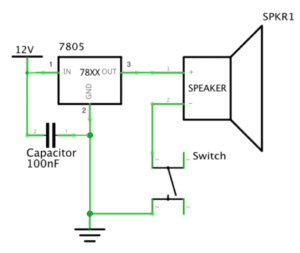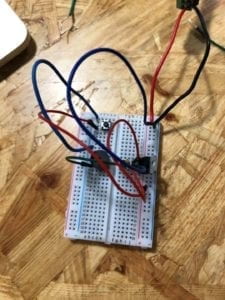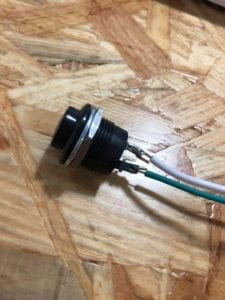Introduction
This activity served as an introduction to soldering and basic circuits.
I’ve copied the objectives and the materials from the original assignment below for quick reference.
Objectives:
- Learn how to read a circuit diagram
- Complete the circuits
- Learn to Solder
- Create a button comprised of button and soldered wires
Materials:
- 1 * Breadboard
- 1 * LM7805 Voltage Regulator
- 1 * Buzzer
- 1 * Push-Button Switch
- 1 * Arcade Button
- 1 * 220 ohm Resistor
- 1 * 10K ohm Resistor
- 1 * 10K ohm Variable Resistor (Potentiometer)
- 1 * LED
- 1 * 100 nF (0.1uF) Capacitor
- 1 * 12 volt power supply
- 1 * Barrel Jack
- 1 * Multimeter
- Several Jumper Cables (Hook-up Wires)
Process
Task 1
We completed the first circuit. At first, we were unsure of how to include the capacitor. Once successfully closed the circuit and created the intended doorbell, we spent some time eliminating the extra wires to make it more effective and less messy.


Task 2
We learned how to solder, by soldering wires to an arcade button. However we never connected our button to the circuit.

Question 1:
After reading The Art of Interactive Design, in what way do you think that the circuits you built today include interactivity? Please explain your answer.
The circuit we built is interactive because it reacts to an action: when the user clicks the button, the speaker makes a sound. It is a very simple interaction, but one none-the-less.
Question 2:
How can Interaction Design and Physical Computing be used to create Interactive Art? You can reference Zack Lieberman’s video or any other artist that you know .
Interaction Design and Physical Computing can help maximize how we interact with the world, providing more tools by which we can explore and create. Before, humans reacted to art. With sensors, now our art can react to us too.
Reflection
We didn’t fully complete the tasks. Since circuitry and soldering are new to us, it took longer than we expected to complete each subtask. However, we considered this experience very fruitful, as it increased our confidence in the matter and made us hungry to explore it further.